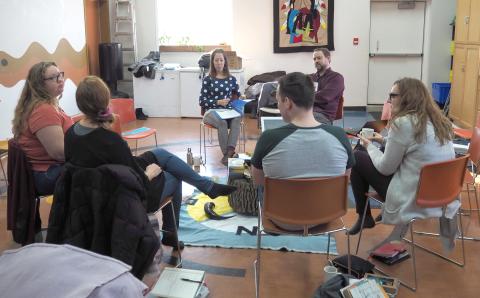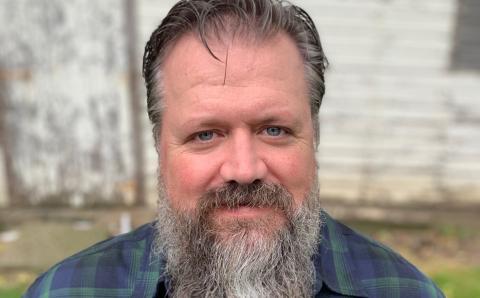Come Sunday morning John Lee, pastor of City Grace Church, a Christian Reformed congregation in New York, N.Y., rolls out of bed to join a prayer walk through Times Square. He is one of the leaders of the group of prayer walkers that started when the COVID-19 pandemic began. Anywhere from six to 25 Christians join from local churches. After 40 minutes of praise and prayer, the group starts to walk. The songs, said Lee, are “a stark difference from the shuttered theaters.”
“Beautiful things happen in church buildings,” said Lee, but “they are invisible to those outside.” COVID-19 turned churches inside-out this year as people worshiped outdoors. Being on these walks, “allows the church to see what is happening in our neighborhoods,” said Lee. It is a “ministry of understanding.”
Lee wrote in an account of his experiences, “A police officer receives prayer and encouragement, a woman, drawn by the music, watches and weeps, a visitor from New Jersey receives prophetic words, and a homeless man is baptized with a bottle of Aquafina.” Some people are discouraging, others ignore the prayer walkers. An outreach group has sprung from the prayer movement. They report 50 people have come to Christ.
It’s not a phenomenon unique to New York. Karen Wilk, a Go Local catalyzer with Resonate Global Mission, is working on an article about what she’s seeing. “As church buildings have closed and God has ‘sheltered’ us in our neighborhoods, it seems there is an invitation from the Spirit to envision and conceive of ourselves more and more as the church, the body of Christ—the communion of saints in, amongst, and with our neighborhoods,” Wilk shared with The Banner. “Could this be God’s dream for his people?” she asked.
At Easter this year, when people were afraid and unsettled, Mike Collins, missional pastor of Mountainview CRC in Grimsby, Ont., encouraged congregants to look out for their neighbors in creative ways. The church gave two bouquets of flowers to all members, the extra one being for a neighbor.
In August, Mountainview started a “Next Steps” campaign to respond to the influx of online newcomers. Church services went fully online March 15 and now continue along with in-person worship at 30% of building capacity. Between 50 to 100 new participants have joined online.
Collins trained five people as spiritual mentors, and they invited online viewers to email questions about faith and life and later set up an online mentors’ group who try to engage people through the church’s YouTube channel’s comments section. No one was sure what to expect. “Let's just do it and see what happens,” was the attitude, said Collins. Two policemen, and later a third person, were the first to ask for follow-up conversations.
What is important is not the numbers but learning new ways of being a church. “We have an opportunity like none that has come our way in years,” Collins said. “I hope the church post-COVID-19 has learned lessons that will compel it to be gospel centers in our communities for years to come.”
See also Wilk’s response to The Banner’s Big Question, “What assumptions might the COVID-19 pandemic be challenging us to rethink as we seek to be the church participating more fully in God’s mission?”
About the Author
Maia VanderMeer is a freelance news correspondent for The Banner. She lives in Mission, B.C.





